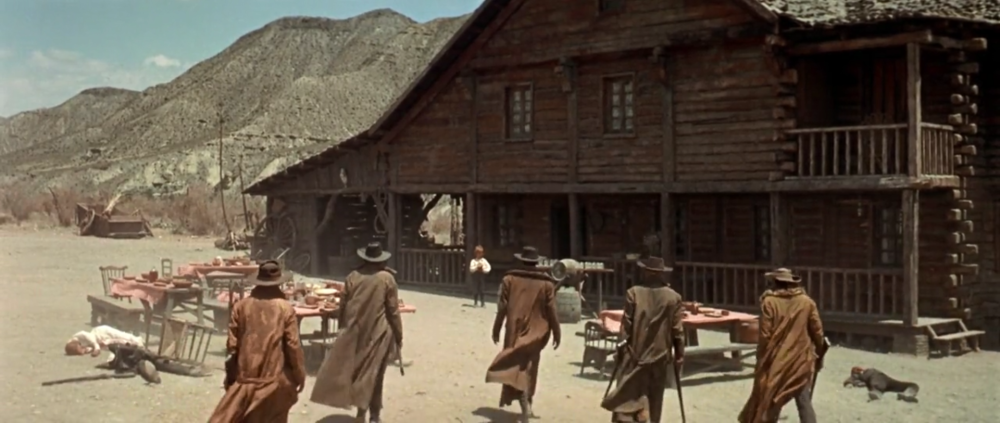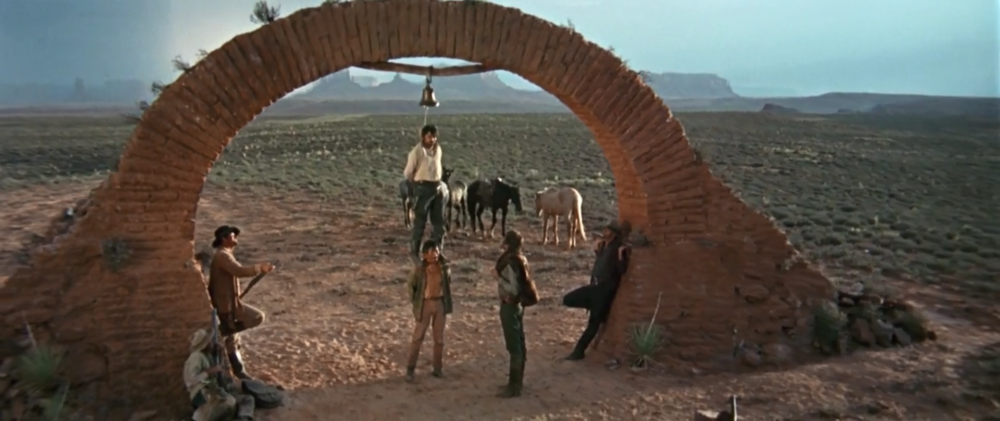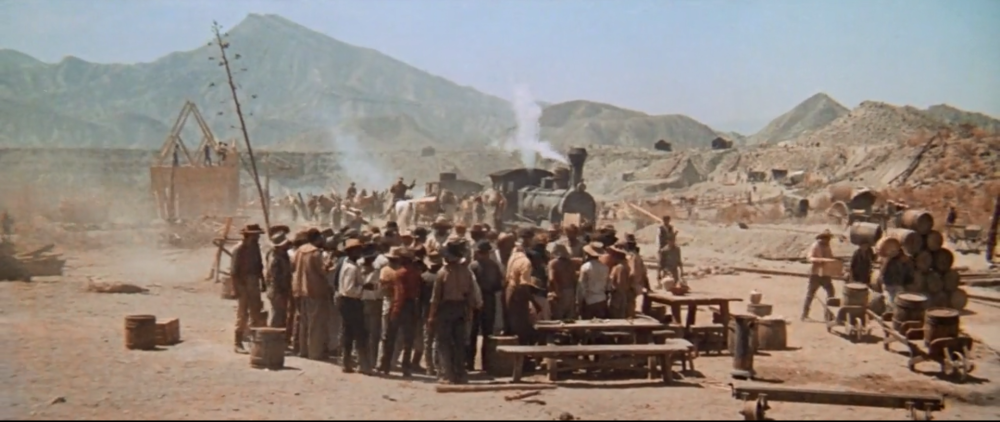Year of release: 1968
Director: Sergio Leone
Screenplay: Sergio Donati, Sergio Leone
Cinematography: Tonino Delli Coli
Editing: Nino Baragli
MUSIC : ENNIO MORRICONE
One word that aptly describes the film ‘Once Upon a Time in the West’ is STYLE. The film’s pace, cinematography, characters lend a unique taste to the film which only Sergio Leone can prepare and present. The films story/screenplay is hardly the distinctive feature the film stands for, so we will discuss the aspects which set the film apart and lends it that Leonish flavour.
The very first shot of the film: a door creaking and three men entering to a queer soundscape, is a cult opening which is synonymous with the genre of westerns. For eleven long minutes, we stay with these three men who kill time while waiting for something/someone. Leone does it purposely so that we get acquainted with these hit men and the mental connotation of their indomitable character gets embellished in our minds. And like a true storyteller, he plays it against us. He introduces the main character ‘Harmonica’ who in an instant, kills all the three men with cinch. This establishes him almost immediately as a deadly, ruthless man who; in half a minute; killed the hit men we spent eleven minutes with. This way of meddling with audience’s psyche to suck them into the film is one of cinema’s finest techniques.
Another technique, which I believe has been used to its zenith in the film, is positioning of elements withing the frame to convey a meaning and expression by the visual itself. Have a look at some of them:

The three-on-one to establish the challenge Harmonica faces

The five men, led by Frank, against a kid. This image, coupled with Morricone’s music, tells us who the antagonist is almost immediately without saying a word!

This shows Harmonica cornered by Frank’s men and tells us the power equation

This image, of the final showdown, tells us that now Frank and Harmonica are equals

The circle of people, to show joy and celebration
These are the various positionings used to evoke different emotions. The use of geometry is also startling, i.e., using lines and angularity to show negative feelings and the use of circle to show the positive.
The use of close-ups is unprecedented and unparalleled. Much like great filmmakers, Sergio Leone too believes in telling his story in images rather than words. Whenever he wants to focus on a character’s intent or the character’s state of mind, he takes us close to their face where we can easily read whats going on. More importantly, his use of long shots followed by close-ups is a visual style like no other.
This clearly depicts the mood of the scene, what the scene is about and more importantly, who’s it about.
He even builds tension in a scene by cut-away close-ups which basically tells us what other people in a scene feel about what’s going on. For example, in the scene where Chayenne first meets Harmonica, Leone uses these to prepare us:
These characters are basically witnessing a scene unfold, much like us, i.e., the audience. So with this, Leone establishes a road map for our mind as he wants us to feel exactly what these people are feeling when they are in that situation.
The character arcs are worth mentioning, especially Frank’s and Jill’s.
Frank tries to be a businessman like Mr. Morton but ends up realizing that he’s okay with “just a man”, as he puts it. He tries to get all practical and business-like but his crude self gets the best of him and he sets everything aside just to know who exactly Harmonica is, which Mr. Morton would’ve forgotten after fulfilling his purpose.
Jill, who was a whore in New Orleans, gets stronger throughout the narrative. She confronts the two bandits and even challenges one of them to rape her as she’s not scared of “just another filthy memory”. She sleeps with Frank to keep herself awake and at the end, she gets to working with a hundred men to build the ‘Sweetwater’ town. Such a strong female character adds value to the bandit world run by men, rugged men.
The music credit in the beginning is not in caps by chance, its by choice. The background score by the great Ennio Morricone doesn’t only accentuates the mood of the film, its one of the most important character of the film. It leads the visual in a way that every sequence feels complete. Also, the soundscape, i.e., the ambient sounds in every scene, conveys and heightens conflict of the characters and the situations.
The only thing that takes the backseat amidst all this is the story itself. This film is an exemplar of technique over substance. Leone doesn’t focuses much on what is happening in the story but focuses a lot on how the story is moving forward and how things are being conveyed. Nonetheless, it’s a great watch!
If you have any comments or peculiar observations, do tell in the comments section. 🙂










